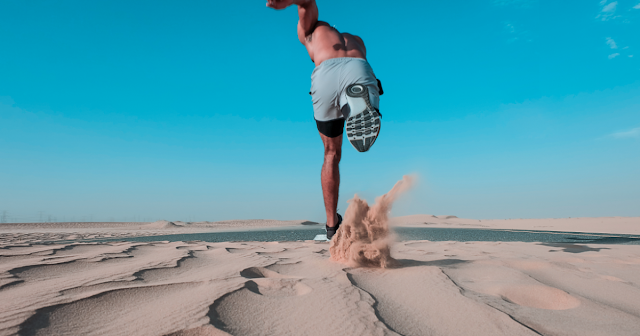Zero drop running shoes might sound like a niche concept, but they’ve gained traction among runners and fitness enthusiasts for good reason. These shoes are designed with no height difference between the heel and the forefoot, mimicking a barefoot posture. But what exactly do they help with? Let's explore the benefits, potential drawbacks, and tips for transitioning to this footwear.
1. Promoting a Natural Running Form
Zero drop running shoes encourage a more natural stride. Traditional running shoes often have elevated heels, which can promote a heel-striking gait. This puts stress on joints like the knees and hips. Zero drop shoes, on the other hand, encourage a midfoot or forefoot strike, which aligns the body's posture and distributes impact more evenly. Over time, this can help users run more efficiently and with less strain on the body.
2. Improving Posture
With no incline between the heel and toes, zero drop shoes allow for better alignment of the spine, hips, and shoulders. This can lead to improved posture during runs and even in everyday activities. When your feet and legs are aligned correctly, your body follows suit, reducing slouching and unnecessary pressure on your lower back.
3. Strengthening Foot Muscles
Zero drop footwear can help strengthen the muscles in your feet and lower legs. Since these shoes don't provide as much arch or heel support as traditional ones, your feet must work harder to stabilize you. This increased activation of the smaller stabilizing muscles can lead to stronger, more resilient feet over time. Stronger feet may also reduce the risk of problems like plantar fasciitis or flat feet.
4. Reducing Risk of Injuries
By promoting proper biomechanics, zero drop shoes can decrease the likelihood of overuse injuries. When your feet land naturally and your muscles engage correctly, there’s less repetitive stress on any single joint or muscle group. They’re particularly helpful in preventing knee pain and shin splints, as they shift the impact closer to the forefoot and away from over-reliance on the heel.
5. Enhancing Balance and Ground Feel
Zero drop shoes provide a more connected sensation to the ground compared to traditional cushioned footwear. This close-to-the-ground feel enhances proprioception, your body's awareness of its positioning. Improved balance not only helps with running but can benefit other activities like yoga, hiking, or simply walking on uneven surfaces.
6. Potential Drawbacks and Considerations
Despite their benefits, transitioning to zero drop running shoes does require caution. Here are some considerations for new users:
Initial Discomfort: If you’re used to running in traditional shoes with extra cushioning and support, switching to zero drop shoes might cause discomfort. Calf and Achilles tendon soreness are common as these muscles adjust to the change in foot mechanics.
Gradual Transition: A sudden switch can lead to injuries like stress fractures or tendonitis. It’s important to ease into wearing zero drop shoes by gradually increasing the duration and intensity of use.
Not for Everyone: While zero drop shoes work well for many, they may not be suitable for everyone. People with pre-existing foot conditions or severe pronation issues should consult a podiatrist before making the switch.
Tips for Adapting to Zero Drop Shoes
- Start Slowly: Begin by wearing them for short walks before incorporating them into your runs. Increase your mileage gradually.
- Strengthen Your Feet: Exercises like toe spreads, arch lifts, and calf raises can help prepare your feet for the demands of zero drop shoes.
- Choose the Right Environment: Start running on softer surfaces like grass or trails as your body adjusts.
- Listen to Your Body: Pay attention to any signs of pain or discomfort. Take breaks if needed.
Final Thoughts
Zero drop running shoes offer a host of benefits, from promoting a natural stride to improving posture and balance. They’re an excellent choice for those looking to reduce injury risks, strengthen their feet, or simply feel more connected to the ground. However, they’re not a one-size-fits-all solution. Transitioning requires patience and preparation, and it's important to assess whether they’re the right fit for your running style and needs.
By understanding both the advantages and challenges of zero drop shoes, you can make an informed decision about whether to lace up a pair and hit the ground running—naturally.





No comments:
Post a Comment
Note: Only a member of this blog may post a comment.